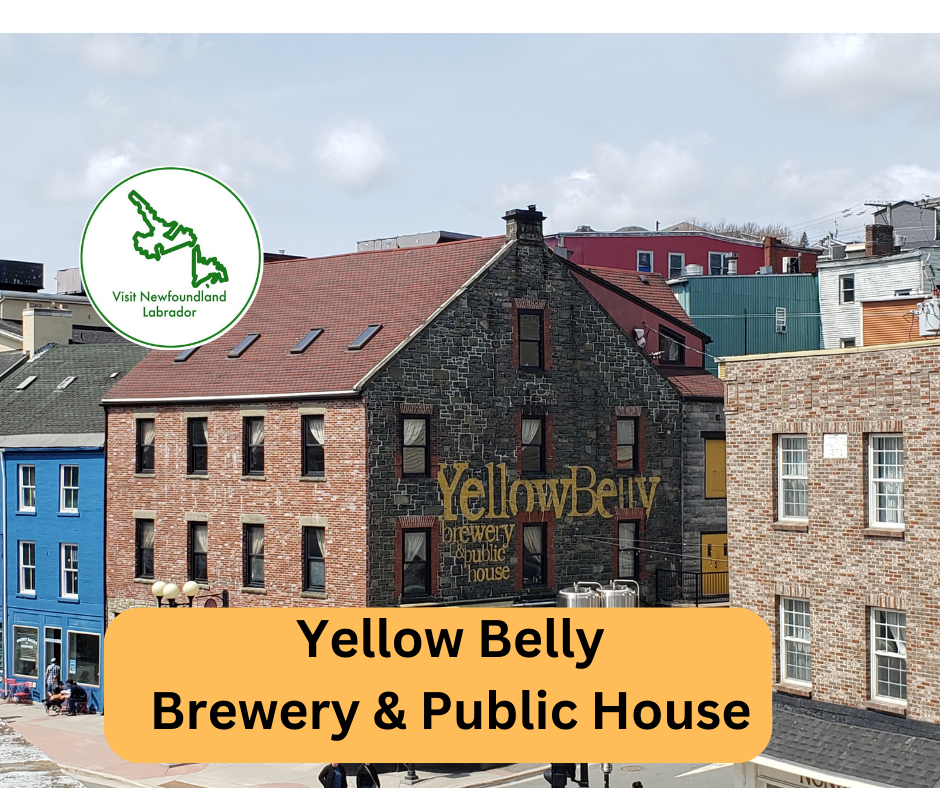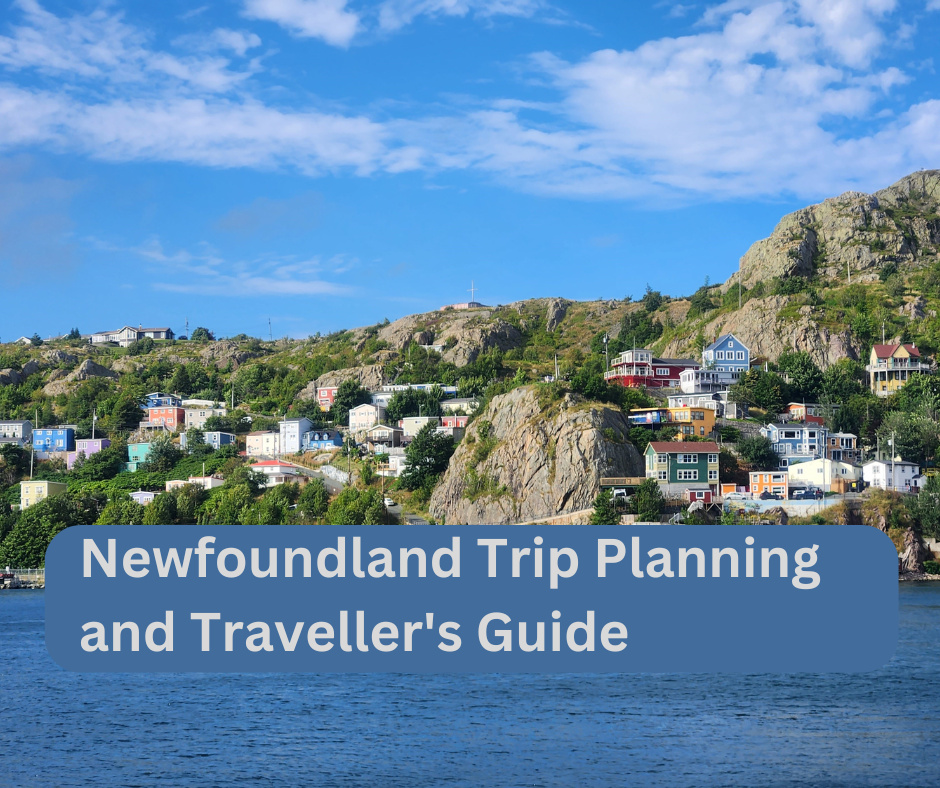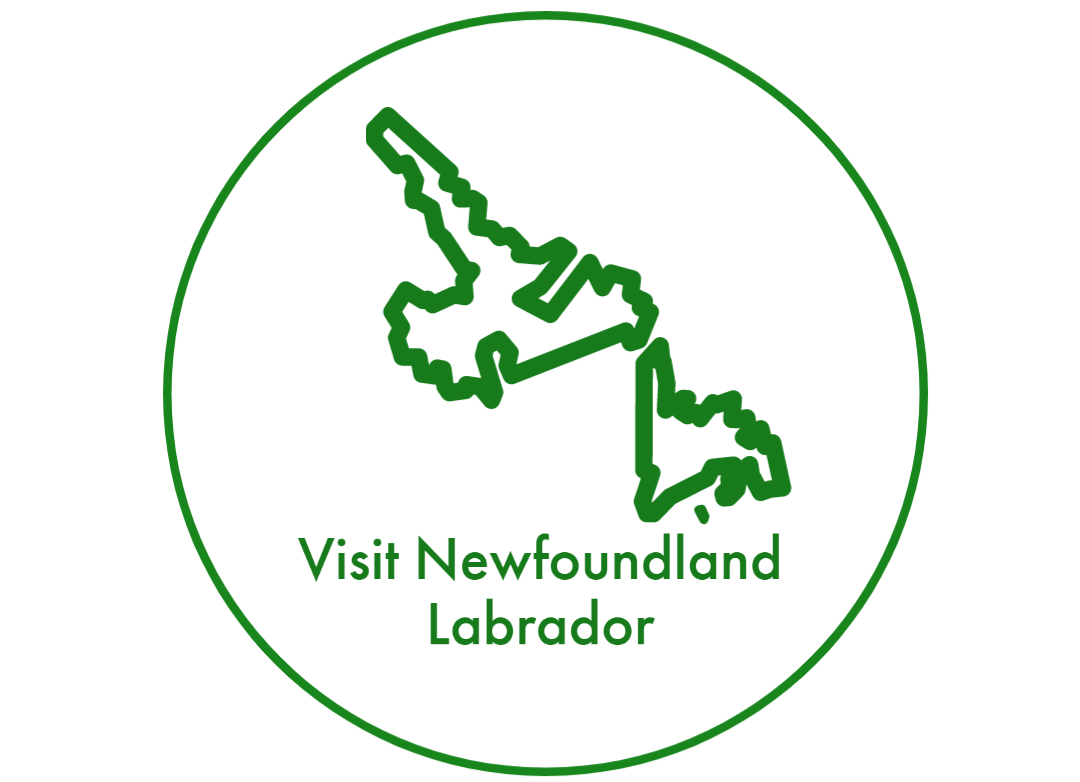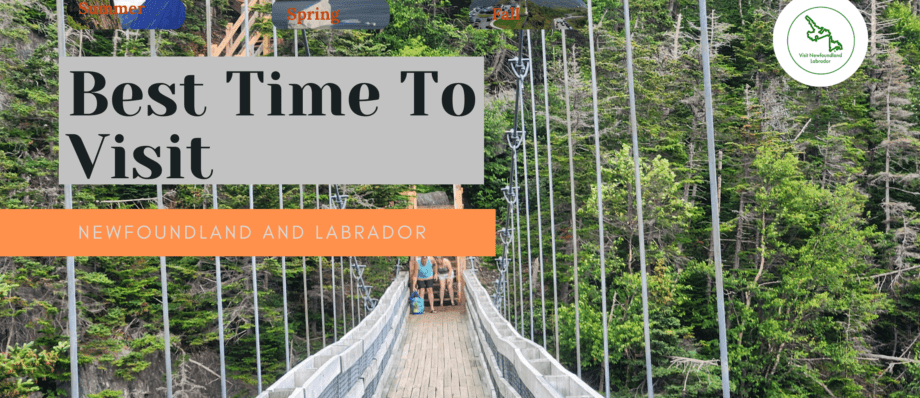The best time to visit Newfoundland and have fun
The best time to visit Newfoundland and have fun: Newfoundland is affectionately a captivating Canadian province that enthralls travellers with its dramatic landscapes, rich history, and vibrant culture. From the towering fjords of Gros Morne National Park to the colourful fishing villages that dot the coastline, Newfoundland offers an unforgettable experience for every visitor. But with its distinct seasonal variations, deciding when to embark on your Newfoundland adventure can be crucial.
Spring (May-June): A Season of Awakening
Spring paints Newfoundland in a palette of rebirth. The lingering winter chill gradually gives way to milder temperatures, with average highs reaching the mid-teens (°C). Lush greenery replaces the stark landscapes of winter, and wildflowers begin to bloom, adding a vibrant touch to the rolling hills and meadows.
For outdoor enthusiasts, spring presents a unique opportunity. Hiking trails become accessible as the snow melts, offering breathtaking views of the awakening landscape. Kayak tours on the calm waters of sheltered bays and fjords provide a chance to witness the resurgence of marine life.
One of the highlights of spring in Newfoundland is the iceberg season. From May to June, majestic icebergs calved from glaciers in Greenland drift down the Labrador Current, gracing the province’s coastline with their inspiring presence. Boat tours from towns like Twillingate, aptly nicknamed the “Iceberg Capital of the World,” offer an unforgettable opportunity to witness these giants of the sea up close.
However, spring in Newfoundland can be unpredictable. Be prepared for sudden weather changes, occasional rain showers and lingering winds. Packing layers and waterproof gear are essential for those inevitable spring downpours.
Summer (July-August): Newfoundland at its Peak
Undeniably, summer is the most popular time to visit Newfoundland. The province basks in warm sunshine, with average highs reaching the low twenties (°C). Long, sunny days provide ample time to explore the outdoors. Hikers can conquer challenging trails like the Gros Morne Mountain Trail, rewarded with panoramic vistas of the park’s rugged beauty. Kayakers can paddle along the dramatic coastline, spotting whales, puffins, and other marine life.
Festivals come alive during summer, filling the air with music, laughter, and local culture. The vibrant George Street Festival in St. John’s is a must-experience, showcasing local musicians and lively street performances. The historic Royal St. John’s Regatta, North America’s oldest sporting event, offers a glimpse into Newfoundland rich nautical heritage.
Whale watching reaches its peak in summer. You can spot Humpbacks, Minke, and even the occasional Orca frolicking in the waters off the coast. Boat tours from towns like Dildo and Witless Bay offer an unforgettable opportunity to witness these magnificent creatures in their natural habitat.
However, summer also brings Newfoundland peak tourist season. Expect higher prices for accommodations and activities, and be prepared for crowds at popular destinations.

Fall (September-October): A Farewell to Summer’s Splendor
Fall in Newfoundland offers a breathtaking display of nature’s artistry. The once-lush landscapes become a vibrant tapestry of reds, oranges, and yellows. The crisp autumn air is refreshing, with average highs hovering in the low teens (°C).
For outdoor enthusiasts seeking a quieter experience, fall presents an ideal opportunity. Hiking trails become less crowded, offering a chance to commune with nature’s beauty truly. The changing colours add a breathtaking dimension to Newfoundland already stunning landscapes.
Wildlife watching remains a highlight in the fall. Whales continue to migrate through the waters until late October, offering opportunities for unforgettable encounters. The fall foliage also attracts a variety of bird species, making Newfoundland a haven for birdwatchers.
Accommodations and activities become more affordable in the fall, making it a budget-friendly time to visit. However, be aware that some businesses and restaurants may have shortened hours towards the end of the season.
Winter (November-April): A Different Kind of Magic
Winter transforms Newfoundland into a wonderland. The landscape is blanketed in pristine snow, creating a serene and picturesque setting. Average highs hover around freezing (°C), with occasional snowstorms adding to the winter charm.
Winter sports enthusiasts rejoice! Cross-country skiing and snowshoeing trails offer opportunities to explore the frozen landscapes. The Gros Morne National Park transforms into a winter wonderland, perfect for a snowy adventure.
Newfoundland unique winter festivals add a touch of merriment to the cold season. The annual Mummer Festival in St. John’s celebrates the arrival of Mummer with a vibrant program of events, music, and costume. The province’s renowned hospitality shines even brighter during winter, with cozy pubs offering a warm haven to enjoy local cuisine and traditional music.
Wildlife watching in Newfoundland doesn’t end with summer. Winter offers a chance to witness the majestic bald eagles soaring through the crisp air, searching for prey. However, winter in Newfoundland is not for everyone. Prepare for colder temperatures, shorter daylight hours, and occasional travel disruptions due to snowfall. Driving conditions can be challenging, so renting a winterized vehicle is essential.
More Ways to Explore Newfoundland and Labrador
- The Best Time For Exploring the Wonders of Newfoundland
- Crossing On The Marine Atlantic Ferry Is The Best
- Best Places To Travel In 2024 For An Amazing Experience
- The Best Amazing Restaurants in St. John’s to Eat Out
What is the best time to visit Newfoundland?
The best time to visit Newfoundland depends on your preferences. Here’s a quick breakdown:
Warm weather and outdoor activities: Summer (July-August)
For iceberg viewing and fewer crowds: Spring (May-June)
Beautiful fall foliage and budget-friendly travel: Fall (September-October)
For winter sports and unique festivals: Winter (November-April)
What is Newfoundland known for?

Newfoundland is known for its stunning scenery, including fjords, mountains, and a rugged coastline. It’s also famous for its rich history, unique culture, and friendly people.
How do you get to Newfoundland?
You can get to Newfoundland by plane, with St. John’s International Airport being the main entry point. There are also ferry connections from Sydney, Nova Scotia.
Is Newfoundland safe to visit?
Newfoundland is a very safe province to visit. However, as with any travel destination, it’s always a good idea to be aware of your surroundings and take precautions.
What are some things to pack for a trip to Newfoundland?
Including rain gear, warm clothes, and layers for your trip. You should pack comfortable walking shoes or hiking boots, sunscreen, and insect repellent (depending on the season).
What are some things to do in Newfoundland besides sightseeing?
There are plenty of things to do in Newfoundland besides sightseeing. You can go hiking, kayaking, whale watching, iceberg viewing, fishing, exploring historical sites, and delve into the vibrant local culture.
What is the food like in Newfoundland?
Newfoundland cuisine is known for its fresh seafood dishes, cod tongues, fish and chips, and chowder. Other popular Newfoundland dishes include:
- Touton (fried dough bread).
- Moose stew.
- Jiggs’ dinner (a boiled dinner with salt beef, vegetables, and pease pudding).
What are some festivals and events in Newfoundland?
Newfoundland has a vibrant festival scene throughout the year. Some popular events include the George Street Festival (St. John’s), the Royal St. John’s Regatta (North America’s oldest sporting event), and the Newfoundland and Labrador Folk Festival.
By understanding the unique charm of each season, you can choose the perfect time of year to explore Newfoundland. Whether you seek warm weather adventures, breathtaking iceberg encounters, or a winter wonderland escape, Newfoundland has it all.
Travelling to Newfoundland and Labrador. Travelers also ask.

What is Twillingate Famous For?
Twillingate, often called the “Iceberg Capital of the World,” is renowned for its breathtaking, vibrant culture. This picturesque town in Newfoundland and Labrador is famous for its spectacular iceberg sightings, particularly during the spring and early summer. Twillingate’s rich Atlantic history, traditional fishing culture, and warm, welcoming community make it a popular destination for tourists seeking an authentic Newfoundland experience.
Is It Worth Visiting Twillingate?
Twillingate is well worth a visit. The town offers unique natural wonders, including stunning coastlines, abundant wildlife, and majestic icebergs. Visitors can enjoy activities such as iceberg and whale watching, hiking along scenic trails, exploring historic sites, and engaging with the local arts and culture scene. The charm and hospitality of Twillingate’s residents further enhance the visitor experience, making it a must-see destination in Newfoundland and Labrador.
Is Twillingate the Iceberg Capital of the World?
Twillingate is often called the “Iceberg Capital of the World.” This title is well-earned due to the town’s prime location along Iceberg Alley, where icebergs from Greenland make their way down the Atlantic Ocean, passing close to the shores of Twillingate. The town’s accessibility and excellent viewing points make it one of the best places in the world to observe these natural wonders up close.
When Can You See Big Icebergs on Twillingate Coastline?
The best time to see icebergs in Twillingate is from late May to early June. During these months, the icebergs are most abundant and visible as they travel down Iceberg Alley. However, depending on weather conditions and iceberg flow, sightings can still occur from April to July.
Can You See Puffins in Twillingate?
While puffins are common in many parts of Newfoundland and Labrador, they are not typically found in Twillingate. To see puffins, visitors often travel to nearby colonies such as Elliston or the Witless Bay Ecological Reserve, where these charming seabirds nest and can be observed in their natural habitat.
What is the Best Month to Visit Newfoundland?
The best month to visit Newfoundland is generally July. The weather is milder during this time, and various activities and events are available. July also offers iceberg and whale watching opportunities, puffin sightings, and enjoying the province’s festivals and cultural events.
What Are Some Fun Facts About Twillingate?
Historical Significance: Twillingate is one of the oldest ports on the island, with a rich history dating back centuries.
Durrell Museum: Home to a rare specimen, the Durrell Museum is a unique attraction in Twillingate.
Twillingate Adventure Tours: Offers guided iceberg and whale watching tours, enhancing the visitor experience.
Traditional Music: Twillingate has a vibrant folk music scene, often featuring live performances of traditional Newfoundland music.
Scenic Trails: The town has several picturesque hiking trails, such as the Long Point Lighthouse trail, offering stunning coastal views.
Where Are the Biggest Icebergs in Newfoundland?
The most enormous icebergs in Newfoundland are typically seen along Iceberg Alley, which includes the coastal areas around Twillingate, Bonavista, and St. Anthony. These massive icebergs originate from Greenland and travel down the Labrador Current, making their way to Newfoundland shores.
What City is Iceberg Alley In?
Iceberg Alley is not confined to a single city but spans a stretch of the Atlantic Ocean, which runs along Newfoundland and Labrador’s coastline. Key towns along Iceberg Alley include Twillingate, Bonavista, and St. Anthony, excellent spots for iceberg viewing.
Why Are There So Many Icebergs in Newfoundland?
The abundance of icebergs in Newfoundland is due to the proximity to Iceberg Alley, a route icebergs take as they drift southward from Greenland. These icebergs break off from the Greenland ice sheet and are carried by the Labrador Current down the coast of Newfoundland and Labrador, providing spectacular viewing opportunities.
What is the Best Month to See Icebergs in Newfoundland?
The best month to see icebergs in Newfoundland is May. The icebergs are most plentiful and visible during this time as they travel down Iceberg Alley. May offers optimal conditions for iceberg viewing, with many large icebergs making their way close to the shore.
What Time of Year is Iceberg Alley Best?
Iceberg Alley is best from late April to early June. This period sees the highest concentration of icebergs along the coast, providing excellent opportunities for observation and photography.
Is Twillingate a Good Place to Live?
Twillingate is considered an excellent place to live, especially for those who appreciate a close-knit community and a slower pace of life. The town offers essential amenities, a rich cultural heritage, and a peaceful environment. However, it may only suit some, particularly those seeking urban conveniences and faster-paced living.
Are There Moose in Twillingate?
Yes, moose can be found in Twillingate and the surrounding areas. Moose are common throughout Newfoundland and Labrador, and sightings are not unusual. However, they are more frequently seen in less populated and forested regions.
Where Do You Stop Between St. John’s and Twillingate?
Between St. John’s and Twillingate, there are several notable stops, including:
Gender: Known for its aviation history and the touching story of hosting stranded passengers during 9/11.
Terra Nova National Park: Offers beautiful landscapes, hiking trails, and wildlife viewing.
Where is the Best Place to See Icebergs in Newfoundland?
Twillingate is the best place to see icebergs in Newfoundland, often called the “Iceberg Capital of the World.” Other excellent locations include Bonavista and St. Anthony, which offer prime viewing opportunities during the iceberg season.
How Many Icebergs Are in Newfoundland?
The number of icebergs in Newfoundland varies yearly, but around 400-800 icebergs on average pass through Iceberg Alley annually. This number can fluctuate based on climatic conditions and iceberg calving rates from Greenland.
What is Iceberg Famous For?
Icebergs are famous for their majestic beauty and immense size, with only a tiny fraction visible above the water’s surface. They are also known for their journey from Greenland to Newfoundland, where they create stunning seascapes and attract tourists and researchers alike.
How Do I Get to Twillingate from St. John’s?
To get to Twillingate from St. John’s, you can drive approximately 5 hours via the Trans-Canada Highway. Alternatively, during the summer, there are bus services and guided tours that include Twillingate as a destination.
Where to See Whales in Newfoundland?
Whales can be seen throughout Newfoundland, with prime spots including:
Witless Bay Ecological Reserve: Renowned for its giant puffin and whale populations.
Trinity Bay: Offers excellent whale-watching tours.
Twillingate: Known for its whale sightings during the summer months.
Are There Whales in Twillingate?
Yes, whales can be seen in Twillingate, particularly during summer. The waters around Twillingate are frequented by humpback whales, minke whales, and occasionally orcas, making it a popular spot for whale watching.
Why Visit Twillingate?
Visiting Twillingate offers a unique experience of Newfoundland natural beauty and cultural heritage. From iceberg and whale watching to exploring historic sites and enjoying local music and cuisine, Twillingate provides a rich and memorable travel experience. The town’s stunning coastal landscapes, friendly community, and diverse activities make it a tourist destination.
Is Twillingate Worth Visiting?
Yes, Twillingate is worth visiting. The combination of its natural attractions, such as icebergs and whales, and its cultural richness, including traditional music and historic sites, make Twillingate a standout destination in Newfoundland and Labrador.
Are There Puffins in Twillingate?
While puffins are not typically found in Twillingate, they can be seen in nearby colonies such as Elliston and the Witless Bay Ecological Reserve. These locations offer some of the best opportunities to observe puffins in their natural habitat.
What is the best time to visit Twillingate, Newfoundland and Labrador for iceberg viewing?
The best time to visit Twillingate for iceberg viewing is from late May to early July. During this period, massive icebergs drift down from Greenland, creating a stunning spectacle. The region’s Iceberg Alley offers some of the most spectacular views of these natural wonders.
Are there any whale-watching tours available in Twillingate, Newfoundland?
Yes, Twillingate offers several whale-watching tours. The best time for whale watching is from June to August when humpback whales migrate through the area. Local tour operators provide boat tours, giving visitors an up-close experience with these magnificent creatures.
What are the top things to do in Twillingate, Newfoundland and Labrador?
Top activities in Twillingate include iceberg and whale watching, hiking the scenic trails such as the Spiller’s Cove and French Beach trails, visiting the Twillingate Museum and Craft Shop, exploring the Long Point Lighthouse, and enjoying local seafood at various restaurants.
Where can I find the best hiking trails in Twillingate, Newfoundland?
Twillingate’s best hiking trails include the French Beach Trail, Spiller’s Cove Trail, and the Lighthouse to Lower Head Trail. These trails offer breathtaking coastal views, rugged landscapes, and opportunities to spot wildlife.
What accommodations are available in Twillingate, Newfoundland and Labrador?
Twillingate offers a range of accommodations, including cozy bed and breakfasts, inns, cottages, and vacation rentals. Popular options include the Anchor Inn Hotel, Iceberg Alley Bed & Breakfast, and Oceanview Retreat.
How can I get to Twillingate, Newfoundland and Labrador?
To reach Twillingate, fly into Gander International Airport, the closest airport. Rent a car and drive approximately 110 kilometres north to Twillingate from there. The scenic drive takes about 1.5 hours.
What are the best restaurants in Twillingate, Newfoundland?
Twillingate’s best restaurants include Georgie’s Restaurant, Canvas Cove Bistro, and the Pier 39 Restaurant at 39 Main Street, Twillingate, NL. These establishments offer fresh seafood, local dishes, and stunning views.
Can I see the Northern Lights in Twillingate, Newfoundland?
Yes, Twillingate is one of the places in Newfoundland where you can occasionally see the Northern Lights, especially during the winter months.
Are there any festivals or events in Twillingate, Newfoundland?
Yes, Twillingate hosts several festivals and events, the most notable being the Fish, Fun & Folk Festival, which is held every July. This event features live music, traditional food, and various family-friendly activities celebrating local culture.
What wildlife can I see in Twillingate, Newfoundland?
Twillingate is home to diverse wildlife, including puffins, eagles, and seabirds. Marine life, such as humpback, minke, and dolphins, are often seen, particularly during summer.
What are the best places for photography in Twillingate, Newfoundland?
For stunning photography, visit Long Point Lighthouse, Spiller’s Cove, French Beach, and the coastal trails. The dramatic cliffs, icebergs, and wildlife provide excellent photo opportunities.
Are there any guided tours available in Twillingate, Newfoundland?
Yes, Twillingate offers various guided tours, including iceberg and whale-watching boat tours, historical walking tours, and hiking tours. These tours provide in-depth knowledge and enhance the overall experience.
What is the weather like in Twillingate, Newfoundland and Labrador?
Twillingate experiences an Atlantic climate with cool summers and mild winters. Summer temperatures range from 11°C to 20°C. Meanwhile, winter temperatures range from -5°C to 5°C. Weather can be unpredictable, so it’s best to prepare for variable conditions.
Is Twillingate, Newfoundland, a good destination for families?
Yes, Twillingate is a family-friendly destination with activities such as boat tours, hiking, visiting lighthouses, and exploring museums. The natural beauty and safe environment make it an excellent choice for family vacations.
What is the significance of the Long Point Lighthouse in Twillingate, Newfoundland?
The Long Point Lighthouse is an iconic landmark in Twillingate. It offers good views of the Atlantic Ocean, the coastline, and icebergs. The lighthouse is a popular spot for travellers and bird-watching.
Are any local crafts or souvenirs available in Twillingate, Newfoundland?
Twillingate is known for its local crafts, including handmade quilts, knitted goods, and pottery. The Twillingate Museum and Craft Shop and various local shops offer unique souvenirs that reflect the region’s culture and heritage.
Can I fish in Twillingate, Newfoundland?
Yes, Twillingate offers excellent fishing opportunities. Visitors can enjoy recreational fishing for cod, trout, and mackerel species. Local tour operators provide guided fishing trips, ensuring a successful and enjoyable experience.
What cultural experiences can I enjoy in Twillingate, Newfoundland?
Cultural experiences in Twillingate include:
- Visiting the Twillingate Museum.
- Attending local festivals.
- Enjoying traditional music performances.
- Exploring historic sites.
Engaging with the friendly local community and tasting regional cuisine provide rich cultural insights.
What is the best time to see whales in NL Newfoundland?
The best time to see whales in Newfoundland is from June to September. Humpback whales, minke whales, and other species migrate through Newfoundland coastal waters during this period.
Is the tip of the iceberg visible?
Yes, the tip of the iceberg is visible above the water, but it represents only about 10% of its total mass. The remaining 90% is submerged underwater, making icebergs particularly dangerous for ships.
Can you see icebergs in Newfoundland in July?
Yes, you can still see icebergs in July in Newfoundland, although they are less common than in May and June. By July, many icebergs have drifted further south or melted.
Where is the best place to see icebergs?
Twillingate, St. Anthony, Bonavista, and Fogo Island are the best places to see icebergs in Newfoundland. These locations offer optimal viewing points and tour opportunities.
How often can you see northern lights in Newfoundland?
The Northern Lights can be seen in Newfoundland several times a year, especially in the fall and winter months. The frequency depends on solar activity and the clarity of the night skies.
Why is it called Iceberg Alley?
The stretch of water known as Iceberg Alley gets its name from the numerous icebergs that travel through this area each year. The icebergs originate from Greenland and drift down the Labrador Current past Newfoundland and Labrador.
When should I visit Iceberg Alley?
The best time to visit Iceberg Alley is from late May to early June. During this period, the highest concentration of icebergs can be seen, offering the most spectacular views.
Can you swim in Newfoundland in August?
Yes, you can swim in Newfoundland in August, especially in the warmer, sheltered areas like lakes and coves. However, the ocean waters remain pretty cold, typically around 12-15°C, so swimming in the sea can be chilly.
How hot is Newfoundland in July?
Newfoundland experiences its warmest weather in July, with a temperatures ranging from 15°C to 20°C. Some days can be warmer, especially inland and away from the coastal breezes.
These are the best travel planning resources you should use.
Looking to book your trip to Newfoundland and Labrador? Use these resources that are tried and tested by other travellers like you who vacation in Newfoundland and Labrador. Bookmark these links. Save them for future reference.
Booking Flights, Hotels or B&B: Start planning your next vacation trip by finding the best flight, hotel or b&b deals. Book Here
Finding things to do in Newfoundland and Labrador on TripAdvisor and Viator is not hard. Enjoy boat tours, whale watching, icebergs watching, kayaking and other activities.
You can also find low prices on hotels, B&B and cabins with these two providers. If you are located in Canada, the USA, the UK or Europe, use Booking.com, and if you are in Canada, the USA or anywhere else, use TripAdvisor.
Car Rental: Here is what we recommend:
When you book with Rentalcars.com, you can compare prices and find the best vehicle for your trip. Economybookings.com Display all their vehicle on the website with a detailed description. They display high-quality photos and a user rating as well. Qeeq.com serves road trip travellers like you from different countries by working with car rental companies worldwide.
Get compensated if your flight is delayed or cancel
AirHelp and Compensateair will help you with flight delays, cancellations, or denied boarding. All you need to do is to submit your flight details, and they will handle the claim process on your behalf. They will handle all the paperwork, airline negotiations, and legal proceedings.
Do you need more help planning your trip?
Check out our Resources Page, where we highlight all the resources and companies you can use to assist with your planning.
Where can I find more information about travelling to Newfoundland and Labrador? Here are helpful resources for planning your trip:
Newfoundland and Labrador Tourism | Travel Canada | The Rooms Provincial Museum



